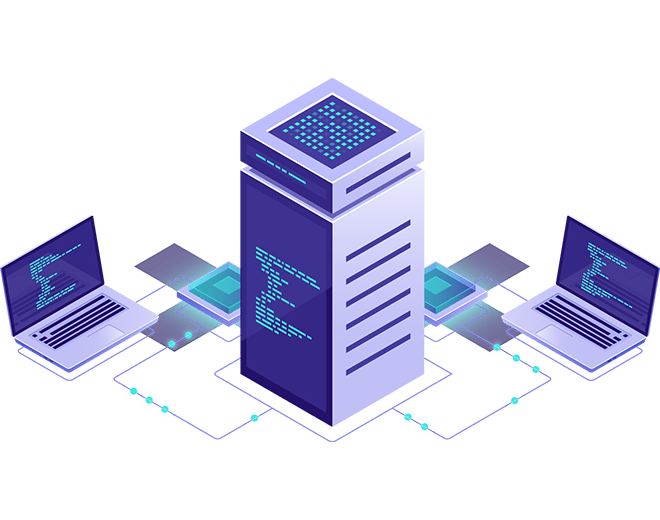
Navigating the Data Landscape: The Rise of Vector Databases for Unstructured Data

By Teqfocus Team
28th May,2025
“AI thrives on context. And context lives in unstructured data.”
As organizations deepen their AI transformation efforts, a critical challenge continues to stall progress beyond pilot projects: managing unstructured data. This blog builds on our earlier discussions;
- Why AI Strategy Starts with Data, Not the Model
- Strategic Data Integration: The Unseen Engine Behind Scalable AI
- Activating external AI models inside CRMs through BYOM
Now, we explore one of the most powerful and often misunderstood capabilities in modern enterprise AI: the vector database.
What’s a Vector Database and Why Now?
Vector databases are purpose-built to store, index, and retrieve data based on mathematical similarity rather than exact matches. These systems are optimized for unstructured inputs such as;
- Text
- Images
- Videos
- Audio
- Sensor streams
- Documents
By encoding each input as a multi-dimensional vector – a numerical abstraction of its content or meaning – vector databases enable capabilities foundational to AI, including semantic search, contextual reasoning, and similarity matching.
The relevance of this technology has exploded in tandem with large language models (LLMs) and generative AI. As McKinsey notes in its 2023 report on The State of AI in 2023, unstructured data makes up more than 80% of enterprise data – yet most of it remains untapped. Vector databases unlock this “dark data” for real business use.
Why Traditional Databases Fall Short
Relational databases are exceptional at managing structured data, think rows, tables, keys, and predefined schemas. But AI workloads are inherently different. They require;
- Natural language understanding
- Fuzzy matching
- Non-linear pattern recognition
- Real-time inference and recommendations
These needs are misaligned with the rigid structure of SQL-based systems. For instance, building a recommendation engine with traditional queries requires complex joins and rules. With vectors, you can identify similar user behavior, preferences, or content with a single high-dimensional similarity search.
As Harvard Business Review explains in this piece, traditional systems aren’t designed to reason with nuance – the way AI and modern applications demand.
The Enterprise Trend: Multi-Model + Vector Capabilities
Forward-looking enterprise data platforms are evolving to support multi-model capabilities- marrying the best of relational, graph, and vector databases.
This means organizations can now;
- Store structured data in tables
- Store embeddings and vectors for unstructured data
- Query across both models for richer, more contextual insights
Salesforce’s Data Cloud is a prime example, integrating vector support for real-time personalization, search, and analytics. Similarly, Snowflake’s Cortex and AWS’s Kendra bring vector and semantic capabilities into core data services.
This composability is enabling AI to be embedded more naturally into workflows without requiring monolithic platforms or massive data migrations.
Where Vector Databases Shine
Real-world applications are growing rapidly across domains. Here’s where vector databases are already making an impact;
Semantic Search & Retrieval (RAG)
By using retrieval-augmented generation (RAG), businesses can pair LLMs with vector search to serve precise, context-aware answers. This enables internal knowledge bots, AI support agents, and contract summarization tools that dramatically improve response quality and reduce hallucinations.
Recommendation Engines
Vectors make it possible to recommend content, products, or services based on behavioral signals, intent, or semantic similarity. Spotify, Amazon, and Netflix use similar approaches to power their recommendation engines.
Natural Language Processing (NLP)
Storing embeddings allows you to perform sentiment analysis, classification, and summarization at scale. Use cases include real-time customer feedback monitoring or chatbot interaction logs.
Document Understanding & Claims Automation
Enterprises can now parse and embed long-form PDFs, invoices, and contracts, allowing AI to “read” and make decisions on unstructured documents. This is accelerating digital claims processing in insurance and loan approvals in banking.
Anomaly Detection
By encoding behavioral norms as vectors, you can quickly detect fraud, policy breaches, or abnormal user activity—faster and more flexibly than rule-based systems. Gartner emphasizes this use in its Emerging Tech: Top Use Cases for AI.
Vector-Enabled Platforms in the Enterprise Stack
|
Tool |
Role |
|
Pinecone, Weaviate, Milvus |
Purpose-built vector databases |
|
OpenSearch (Elasticsearch + k-NN plugin) |
Hybrid keyword + vector search |
|
Salesforce Data Cloud |
Multi-model AI-driven customer data platform |
|
LangChain + FAISS |
Open-source stack for building RAG pipelines |
|
Azure Cognitive Search |
Enterprise-ready vector search with Microsoft tooling |
According to Forrester, by 2026, over 50% of enterprise AI apps will rely on vector similarity search to operationalize unstructured data – a trend that is accelerating with every major cloud vendor offering native support.
How This Connects to the Big Picture
Vector databases are not a standalone solution. They are the activation layer that thrives only if:
- Your data is unified and accessible
- Your workflows are already embedded with AI
- You’ve dismantled silos and legacy pipelines
Much like how cloud computing was once just infrastructure until platform services made it valuable, vector databases are valuable when paired with the right strategy, context, and operational readiness.
Architecting with Vector: Key Design Considerations
To deploy vector search effectively, enterprises must think about:
- Data Embedding Strategy: Will you use proprietary models (e.g., OpenAI) or open ones (e.g., HuggingFace, BERT)? What are the trade-offs in cost, control, and accuracy?
- Similarity Metrics: Cosine similarity is common, but certain use cases benefit from Euclidean or dot-product approaches.
- Hybrid Retrieval: Combining keyword and vector searches improves recall and relevance – especially in regulated or high-risk environments.
- Latency & Scale: Real-time search across millions of embeddings demands optimized infrastructure – typically GPU-accelerated or partitioned for speed.
- Governance: Role-based access control, logging, and explainability are critical in regulated sectors like finance and healthcare. AWS and Azure offer built-in capabilities here.
Final Word: Structure is Optional. Intelligence is Not.
AI doesn’t just reason over clean rows and neat columns. It learns from nuance, language, behavior, sentiment, and context. If your database can’t “see” that – your AI never will.
Vector databases are your bridge to intelligent systems that don’t just automate – but actually understand.
If you’re serious about scaling AI across customer experience, product intelligence, or operations – it’s time to evolve beyond legacy architecture.
Unlock AI-Ready Data Architecture
Let’s talk. Schedule a consultation on AI readiness and integration strategy.
